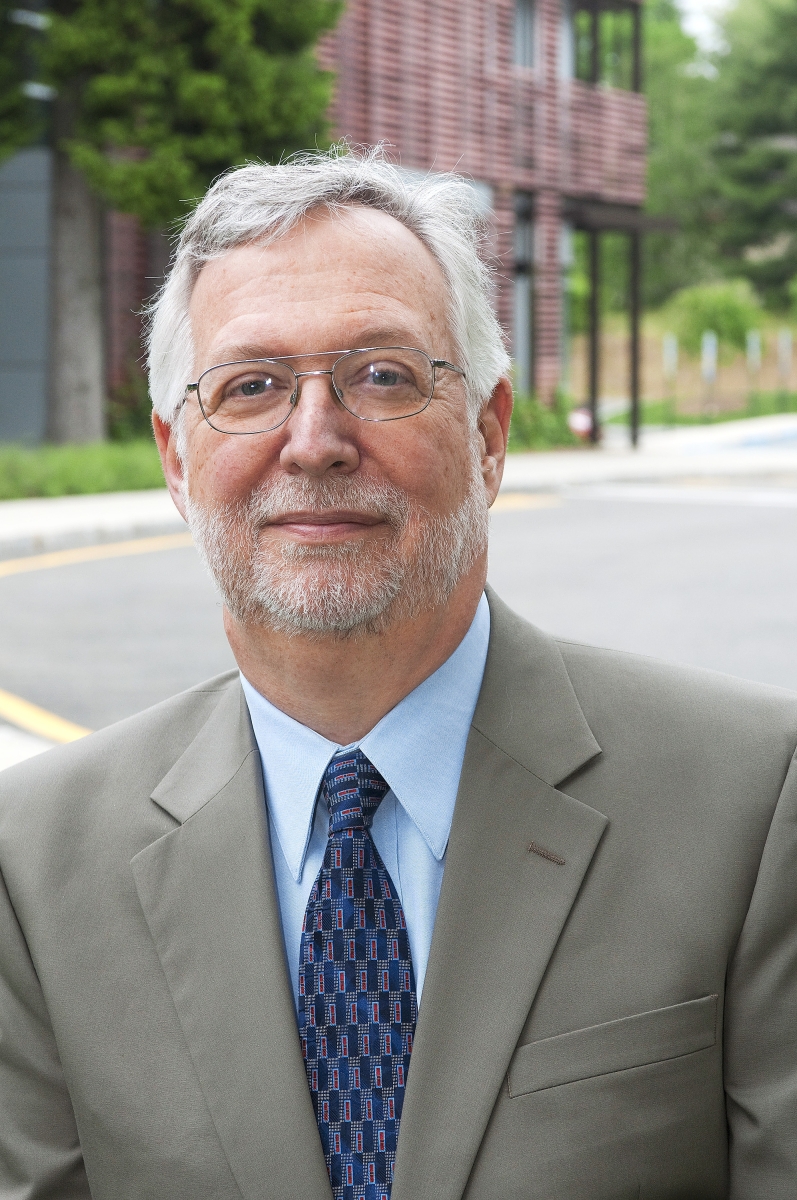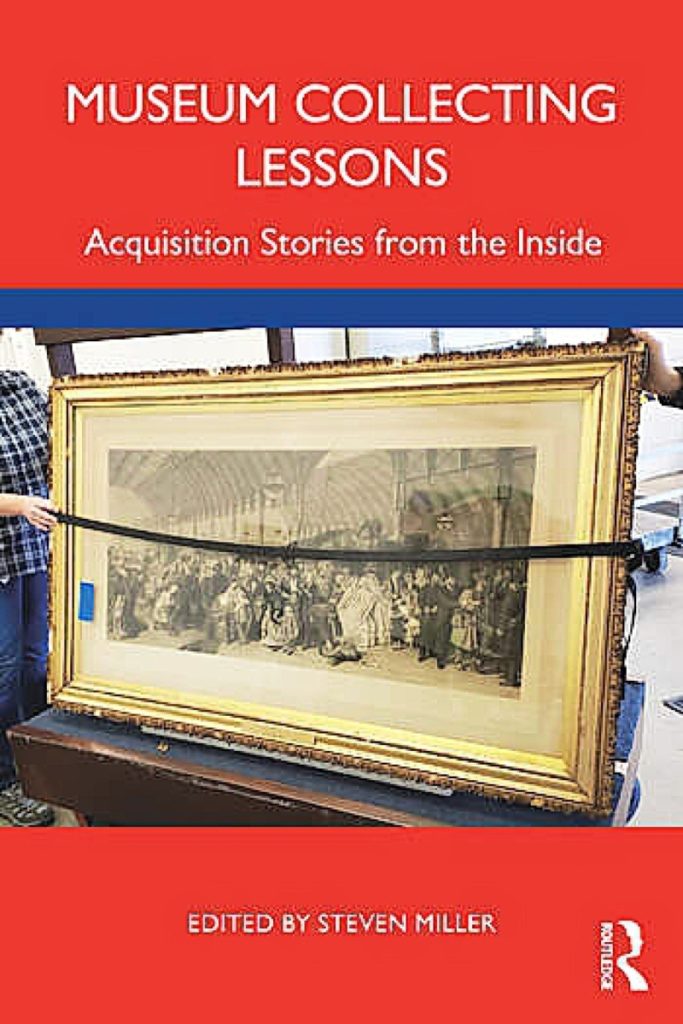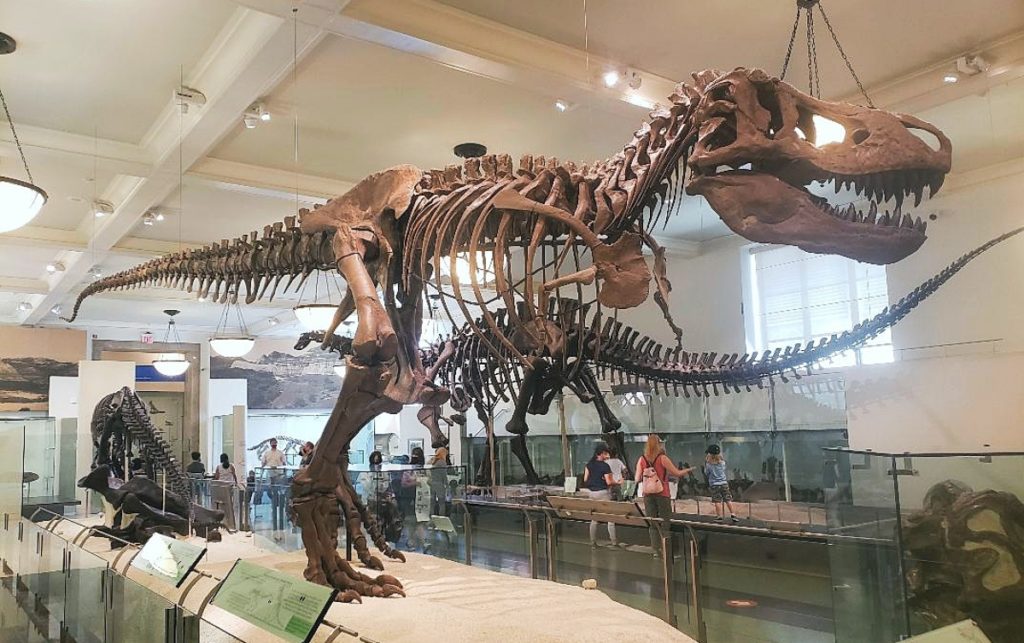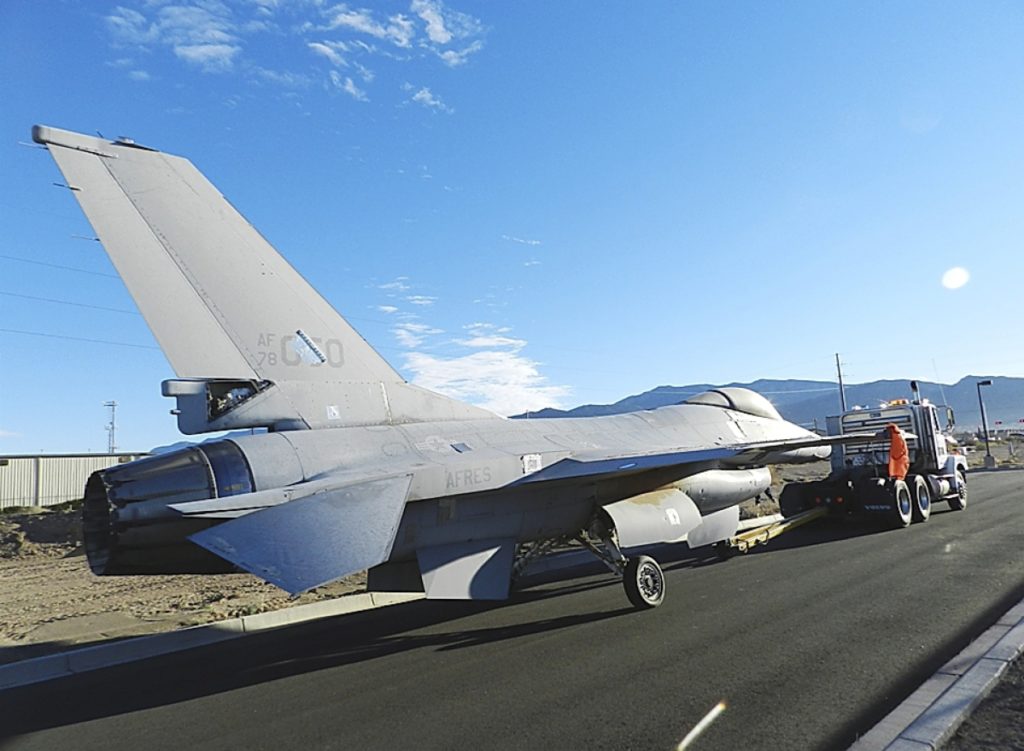
Why do we go to museums? Some of us want to learn about the past, some of us want to scratch an itch of a collecting passion, while others may just be curious about art and culture or merely want to be entertained. More important perhaps are the questions of how museums meet their fundamental duty to collect and present art and material culture to us. Steven Miller, organizer and editor of Museum Collecting Lessons: Acquisition Stories from the Inside, has some thoughts, which are presented in ten chapters contributed by museum practitioners working in art, history and science museums in the United States, Canada and India. He includes four chapters of his own collecting perspectives and experiences. It is the first book of its kind to explore the many ways museums acquire what is preserved and used for exhibitions, programs, publications, scholarship, preservation and online platforms.
How did you assemble your team of contributors for this project?
I placed a request for contributors on an American Alliance of Museums list-serve. Responses were immediate and terrific, representing an international scope of collecting stories.
When and how did you start your museum career? What were your early influences?
I had the good fortune to start my career in 1971 with a curatorial-track position at the Museum of the City of New York. The job had not yet been advertised. I called out of the blue. It was soon after I had graduated from Bard College with a major in sculpture and dual minors in art history and history. I had no graduate degrees – and still do not – but had an impressive undergraduate record of summer and college field period museum jobs. Such hiring success is unheard of in today’s museum world. I was there 16 years and did a lot of collecting.
Since I was a kid I wanted to work in museums. With a keen interest in history and art, they were magical places. My parents were fully supportive. My father was an interior designer and my mother had a degree in early childhood education. They too loved art and history. Our house was always elegantly furnished and there was plenty of inherited furniture. Thus, everything had a story. I suspect this is why I gravitated to regional history museums. As I progressed with my museum focus I had some helpful mentors.

The materials acquired that this book addresses cover a wide range. One of the most compelling examples is the acquisition of an F-16 fighter jet. Can you provide some insight for this one?
A first question museums ask when collecting is, do we have room for what we want? This would be especially relevant for something as large as an airplane. The National Museum of Nuclear Science & History in New Mexico had experience with such big things and could take this on. A second consideration all museums address when collecting is about an item’s physical condition and the prospects of properly caring for it. Again, as the museum director James Walther explains, the institution was readily prepared to handle this assignment. Volunteers can be an asset or deficit for nonprofit organizations and museums are no different. Fortunately, the acquisition of the jet was made possible by a coterie of loyal and experienced museum volunteers. What was unique about this acquisition when compared to others in the book were questions about the fighter jet’s ownership. What federal department, office, agency, owned it and was legally allowed to transfer ownership? The director navigated this issue with diplomatic finesse.
Amenities and experiences that the museum-going public expects these days are changing. You provide the example of the new Museum of American Arts and Crafts Movement in St Petersburg, Fla. What do you make of the nearly purely experiential exhibitions like the immersive Van Gogh?
In my opinion, the sort of immersive experiential exhibition you reference is simply the latest way museums can tell about their missions. I remember when slide presentations were a revolutionary step for museum exhibition design. Visiting a museum these days involves higher expectations regarding amenities than was once the case. The “museum as attraction” phenomenon so prevalent today was almost single-handedly invented by Thomas Hoving when he was director of the Metropolitan Museum of Art, New York City (1967-1977). His father headed Tiffany & Co., and some say that high-style retail approach to marketing rubbed off on his son.
Do you have any examples of failed collecting attempts – or perhaps a near miss?
I personally experienced no examples, though there were things I wish I had gotten over the years. I do know of an example at the Museum of the City of New York. It happened years before I was there. A major collector of paintings, prints, drawings, etc. of New York City deposited his collection on long-term loan with the museum. Two galleries were named for him. It was assumed that the collection would come to the museum upon his death. To the shock of the museum, this was not the case. He willed them to another New York City museum.

Tyrannosaurus rex skeleton, American Museum of Natural History, New York City. Collected by
B. Brown and P,C. Kaisen, 1908, Big Dry Creek, Montana, USA. Steven Miller photo.
You write in your introduction that the one characteristic that all museums have in common is a “priority to rely on the tangible to discuss the intangible.” Whither then NFTs?
From what little I know of NFTs and museums, they seem to be a fundraising option. No one responding to my call for chapter contributors offered an NFT story. This does not mean an acquisition could not be done with an NFT in mind, however.
Examples in one of your book’s chapters support an analogy of the museum as a research library. How so?
Objects of non-verbal inherent content can hold information along the same lines as objects of verbal content, such as books, letters, contracts, diaries, documents and so forth. Of course, what information a chair, car, dress, rug, plate, statue, etc. holds will depend on its material condition, provenance and any existing or new scholarship. The curatorial department I headed at the Museum of the City of New York was its public research department. People could make appointments to consult prints, paintings, photographs and a host of other materials relating to whatever topic they were studying. This knowledge-based approach to collections provides a counter argument to the idea that museums only have collections for exhibition purposes. I like to say, no one walks into a significant research library and complains that the content is not all being consulted all the time. This holds true for museums.
Tell us about one of the most unusual museum acquisitions detailed in the book.
Without question, the most unusual acquisition is the bag collection given to the Institute for Human Science of Culture at the Drs Nicholas & Dorothy Cummings Center for the History of Psychology at the University of Akron in Ohio. Numbering about 12,000 bags ranging from small paper items to larger containers, including a golf bag, the collection tells the current story of what for most people are ordinary, common-place and even mundane things in use daily. However, these practical objects can reflect all sorts of societal attitudes, practices and cultural perspectives. When this story was in the responses I received requesting chapter submissions, I knew immediately it had to be included. In addition to the oddity of the collection, it reflects my idea that there can be a museum for every subject imaginable if there is enough tangible evidence to cover the topic in a meaningful way.

Moving the F-16 on a bright Sunday in May 2014. The maximum speed was 5 mph for the old tires, and the trip between the abandoned site and museum was nine miles. Volunteers drove the truck
using a borrowed Air Force regulation tow bar. (Photo: Maj. Jerry Hanks, USMC retired).
What are the roles of collectors circles in furthering a museum’s mission?
Collectors, either individually or as a like-minded group, can be of enormous importance for museums, especially when it comes to acquisitions. One of my chapters provides an excellent example. It is about getting the Murtogh D. Guinness collection of mechanical musical instruments and automata when I was the executive director of the Morris Museum, Morristown, N.J. These self-activated entertainment devices were common for several centuries. They died out in the Twentieth Century when electrical and digital forms of entertainment made them passé. There are thousands of collectors of these machines around the world. The Morris Museum now enjoys helpful attention and advice from scores of these folks.
The book chooses not to cover its theme’s opposite – deaccessions. Why?
Deaccessioning is the policy and practice of removing collections. Since the book is about adding rather than subtracting things, I chose to avoid the topic. However, it is well-addressed in many writings within the museum field and in the general media. Deleting collections still has the potential to be the single most controversial action a museum can pursue. I have specialized in the subject and written a manual among other things. I have also done deaccessioning on the job.
What do you want readers to take away from this book?
I hope readers will understand that what they see in museums did not enter in some mysterious manner. For the most part things have been acquired for public benefit with considerable thought. I want readers to understand that the vast majority of museum collections have been donated, or acquired in the field – as is the case in natural history museums, for instance. Museums do purchase things and that is a rare option. I also want readers to see the many ways museum collections can be formed.
–W.A. Demers
[Editor’s note: Museum Collecting Lessons: Acquisition Stories from the Inside, edited by Steven Miller is easily found at Routledge, a Taylor & Francis publisher website, as well as Amazon].




